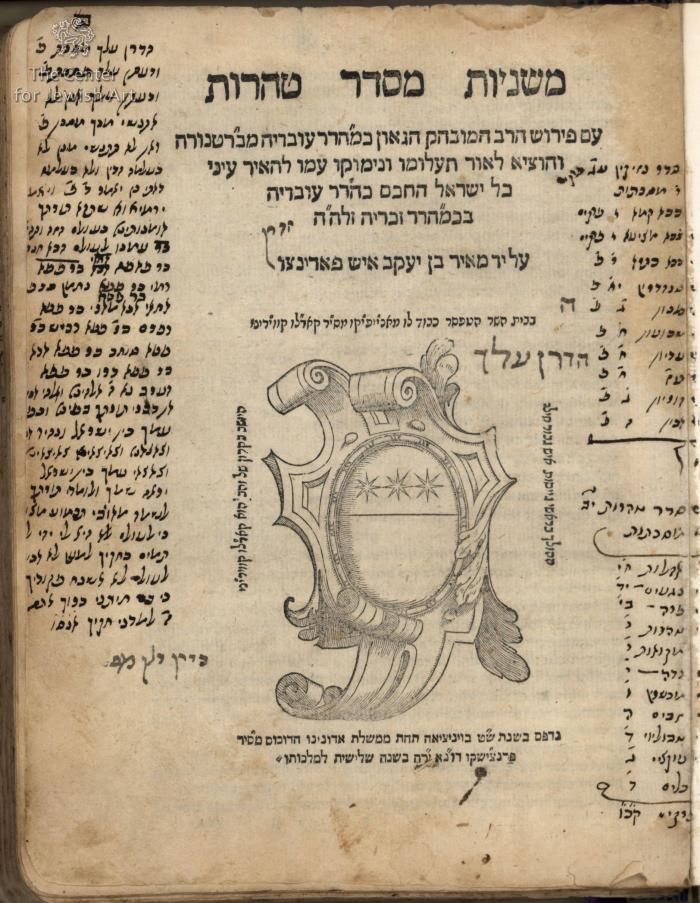Obj. ID: 37618 Mishnayot me-Seder Taharot, Venice, 1549

sub-set tree:
This text was prepared by William Gross:
The Mishnah is the first major written redaction of the Jewish oral traditions known as the "Oral Torah". It was redacted by Rabbi Yehudah HaNasi sometime before his death in c. 217 CE, in a time when, according to the Talmud, the persecution of the Jews and the passage of time raised the possibility that the details of the oral traditions of the Pharisees from the Second Temple period (536 BCE – 70 CE) would be forgotten. The majority of the Mishnah is written in Mishnaic Hebrew, while some parts are Aramaic. It consists of six orders (sedarim), each containing 7–12 tractates (masechtot), 63 in total. It is further subdivided into chapters and paragraphs or verses.
The earliest known copy of the Mishnah has additions, and is contained within a book featuring commentary that was printed in Naples Italy during the late 15th century.
The Parenzo family of Hebrew printers was active in Venice during the 16th and 17th centuries. Jacob (d. 1546) had come to Venice from Parenzo, on the Dalmatian coast of Italy, whence the family name, but was probably of German origin. His son Meir (d. 1575), who was responsible for this edition of the Mishnah, probably learned the printing trade at the Bomberg press, where he worked together with Cornelio Adelkind in 1545. His own productions compare favorably in beauty and elegance with those of his masters. Parenzo worked for some time as a typesetter and corrector at the press owned by Carlo Querini. During 1546–48 he worked on his own, publishing five works, and later an edition of the Mishnah with Bertinoro's commentary for Querini. From about 1550, however, his main work was with Alvise Bragadini.
The Parenzos used various printer's marks: Meir, a seven-branch Menorah, and a rather daring design with Venus directing arrows at a seven-headed dragon; and his brother, Asher, a mountain rising from the sea, with a laurel wreath above and a flying eagle at the left. Meir's colophons abound in editions prepared by him. In 1547 the great French engraver and type cutter Guillaume Le Bé, and later Jacob of Mantua, produced Hebrew type for him. At Meir's death (1575), his brother Asher took over working for the Venetian printer Giovanni di Gara, as well as for Bragadini, until 1596. Gershon ben Moses, probably a nephew of Meir and Asher, worked for the Venetian printer Giovanni di Gara during 1599–1609, as did his son Moses in 1629.
Commentator: Ovadia Mebartanura



